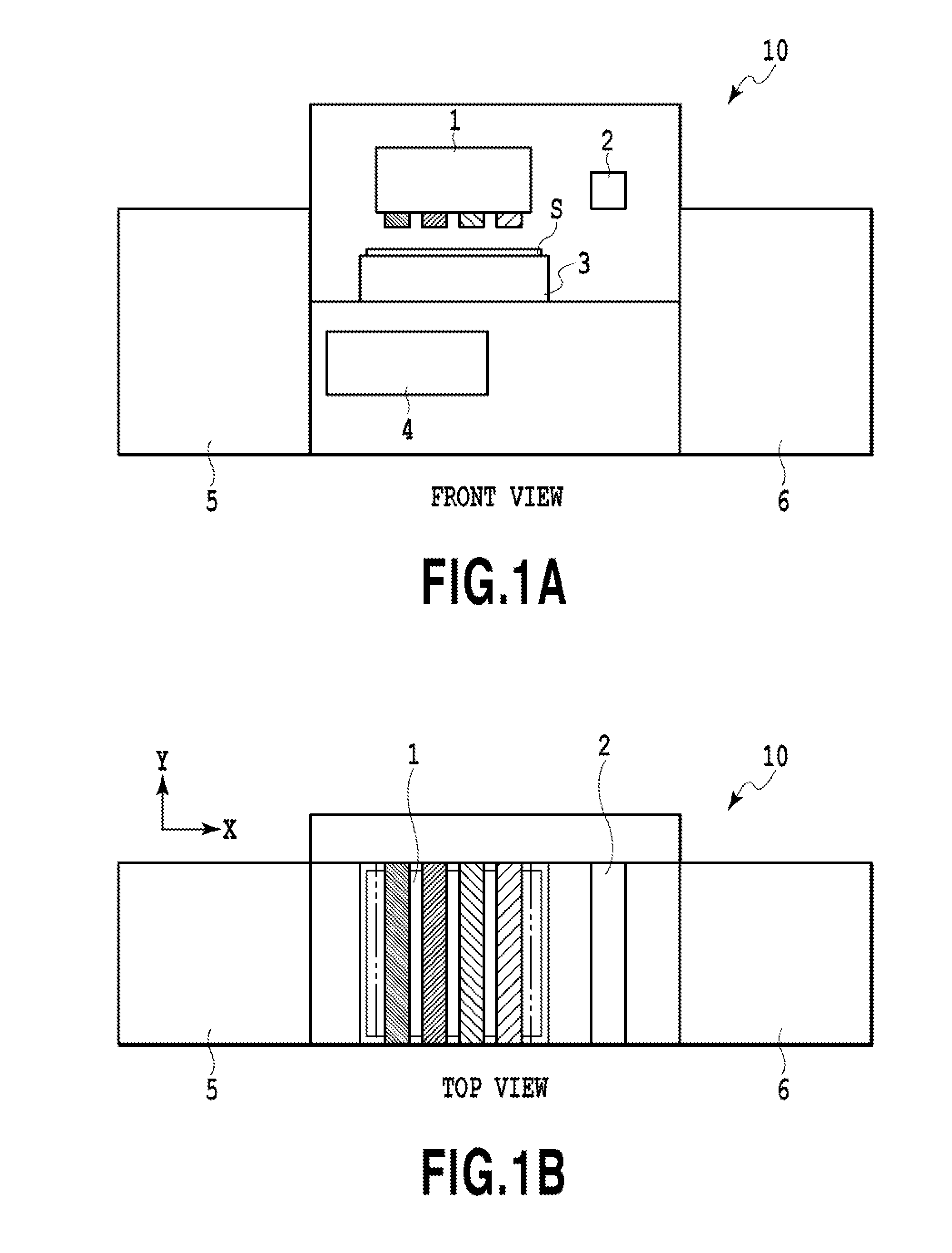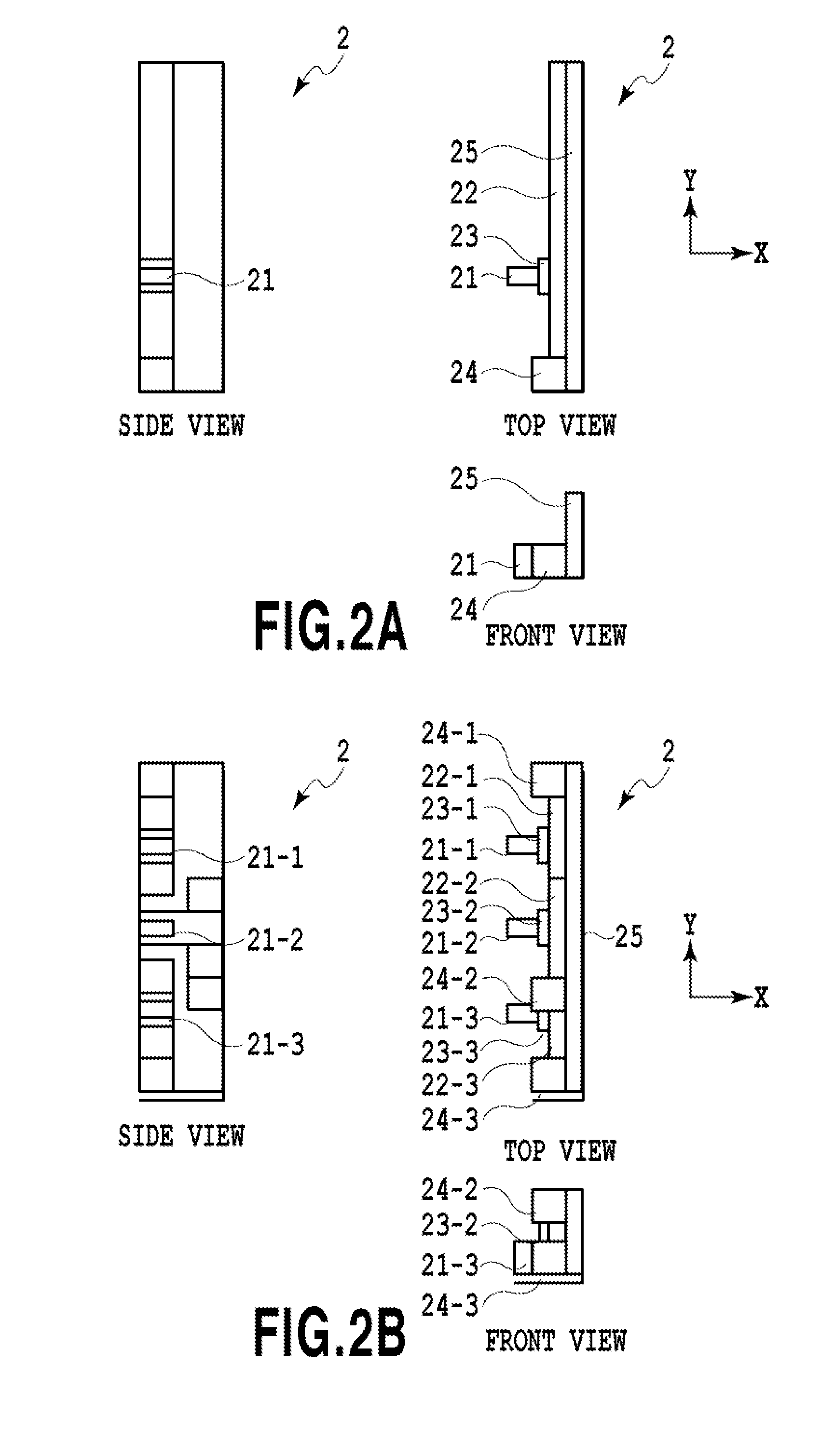Ink jet printing apparatus and method for estimating moisture content of print sheet
a printing apparatus and print sheet technology, applied in the direction of mechanical means, optical radiation measurement, instruments, etc., can solve the problems of complex operations and mechanisms for obtaining the moisture content the curling or cockling of the print sheet, and the productivity of the printing apparatus is reduced, so as to achieve the effect of not decreasing productivity
- Summary
- Abstract
- Description
- Claims
- Application Information
AI Technical Summary
Benefits of technology
Problems solved by technology
Method used
Image
Examples
experiment 1
[0053]The present experiment uses the printing apparatus 10 and measures a thickness change rate of a print sheet when a pseudo ink not containing a color material component is ejected to a print sheet to form an image.
[0054]FIG. 4A to FIG. 4C are graphs showing the relationship between an elapsed time from printing and a thickness change rate of a print sheet when the pseudo ink A is ejected to the print sheet from a print head to form a given image. More specifically, in FIGS. 4A to 4C, ejection amounts from the print head are represented by A1, A2, and A3 (A126 of the sheet conveying part 3 which holds the back side of the sheet is set to zero in advance, and the distance from the sensor to the front side of the printed sheet is measured. The thickness is indirectly measured.
[0055]FIG. 5A to FIG. 5C are graphs showing comparison of a thickness change rate of a print sheet shown in FIGS. 4A to 4C with a change in moisture content of the print sheet. More specifically, FIGS. 5A to ...
experiment 2
[0066]In the present experiment, the same experiment as the above-described Experiment 1 is performed by using a general ink containing a color material component to obtain the relationship of the moisture content with respect to the thickness change rate. More specifically, like Experiment 1, the present experiment measures a thickness of a print sheet in a given image printed by using the printing apparatus 10 shown in FIG. 1A to FIG. 3B and measures a moisture content to obtain the relationship of the moisture content with respect to the thickness change rate based on the measurements.
[0067]FIG. 7A to FIG. 7C are graphs showing the relationship between an elapsed time from printing and a thickness change rate of a print sheet when an ink C that is generally used in printing is ejected to the print sheet from a print head to form a given image. FIG. 8A and FIG. 8B are graphs respectively showing comparison of the thickness change rate (solid line) in the present experiment shown i...
first example
[0074]A description will be given of a first example related to a method for estimating a moisture content of a print sheet from the change in thickness of the print sheet according to the above-described embodiment of the present invention. FIG. 9 is a flowchart of a process of estimating a moisture content. The process shown in FIG. 9 is performed in the printing apparatus 10 including the printing part 1, the thickness measuring part 2, the sheet conveying part 3, the control part 4, and others as described with reference to FIG. 1A and FIG. 1D. The process of the present example will be described according to the steps in the order mentioned in FIG. 9.
[0075](S101 to S102: Print Data Transfer)
[0076]Print data is transferred by the controller in the control part 4 or an external device such as a host computer connected to the controller via I / O interfaces and is stored in memory. Then, the control and the processing in the printing apparatus are started.
[0077](S103: Paper Feeding ...
PUM
| Property | Measurement | Unit |
|---|---|---|
| pressure | aaaaa | aaaaa |
| time | aaaaa | aaaaa |
| suction pressure | aaaaa | aaaaa |
Abstract
Description
Claims
Application Information
 Login to View More
Login to View More - R&D
- Intellectual Property
- Life Sciences
- Materials
- Tech Scout
- Unparalleled Data Quality
- Higher Quality Content
- 60% Fewer Hallucinations
Browse by: Latest US Patents, China's latest patents, Technical Efficacy Thesaurus, Application Domain, Technology Topic, Popular Technical Reports.
© 2025 PatSnap. All rights reserved.Legal|Privacy policy|Modern Slavery Act Transparency Statement|Sitemap|About US| Contact US: help@patsnap.com



